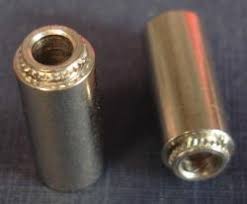Flat shoulder rod end bolts serve as a pivotal component in the engineering and mechanical industries, offering a unique blend of strength, precision, and versatility. This guide delves into the critical aspects of these bolts, providing insights into their design, application, and benefits.
Design and Specifications
Material Quality
The choice of material significantly influences the durability and performance of flat shoulder rod end bolts. Manufacturers often use high-grade steel, such as AISI 4140, for its outstanding tensile strength and resistance to wear and fatigue. This material ensures that the bolts can withstand rigorous operational demands without compromising their integrity.
Dimensions and Tolerances
Precision in dimensions and tolerances is crucial for the optimal performance of flat shoulder rod end bolts. Standard sizes range from M6 to M24, catering to a wide array of application needs. The tolerances, usually within the ±0.005-inch range, ensure a perfect fit and smooth operation in mechanical assemblies.
Surface Finish
A meticulous surface finish not only enhances the bolt’s resistance to corrosion but also reduces the friction between mating surfaces. Electroplating with zinc or nickel is a common practice, providing a protective layer that extends the lifespan of the bolt.
Applications
Automotive and Aerospace
In the automotive sector, engineers utilize flat shoulder rod end bolts for their ability to ensure a secure connection between suspension components. The aerospace industry appreciates these bolts for their lightweight design and high strength-to-weight ratio, making them ideal for critical aircraft structures.
Machinery and Robotics
Machinery and robotics benefit from the precision and robustness of these bolts. They facilitate accurate movement and alignment, essential for the smooth operation of mechanical systems and robotic arms.
Benefits
Efficiency and Performance
The efficiency of mechanical systems greatly depends on the quality of components like rod end bolts. The precise dimensions and quality materials used in flat shoulder rod end bolts ensure high performance, contributing to the overall efficiency of the machinery. For instance, in an automotive suspension system, these bolts can withstand forces up to 8000 pounds without deformation.
Cost and Lifespan
Despite their high-quality construction, flat shoulder rod end bolts represent a cost-effective solution for mechanical connections. With prices ranging from $2 to $15 per bolt, depending on size and specifications, they offer an economical option without compromising quality. Moreover, their durable materials and design contribute to an extended lifespan, often exceeding 10 years in typical applications, which reduces replacement costs and downtime.

Challenges
Precision Requirements
Achieving the high precision necessary for flat shoulder rod end bolts demands sophisticated manufacturing processes. This requirement can elevate production costs but is essential for the bolt’s performance in critical applications.
Environmental Factors
While these bolts are designed for durability, extreme environmental conditions, such as high humidity or corrosive substances, can affect their longevity. Regular maintenance and inspections are vital to mitigate these effects.
In conclusion, flat shoulder rod end bolts play an essential role in various industries, offering a blend of strength, precision, and durability. Their design, material quality, and application-specific adaptations make them indispensable components in achieving mechanical efficiency and reliability.